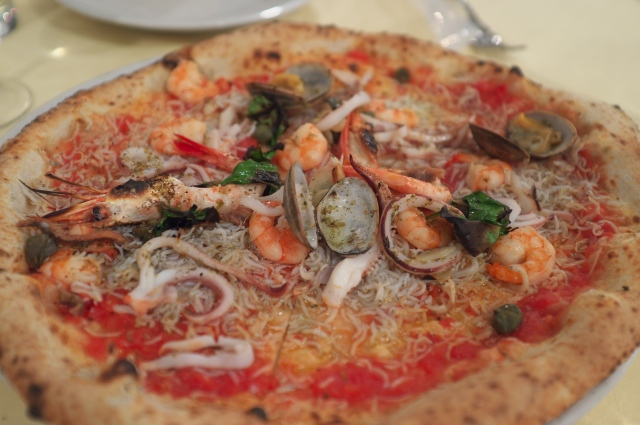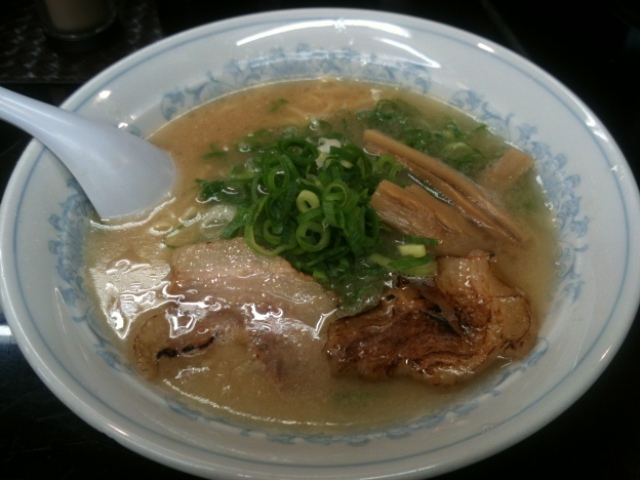During its two hundred years of isolation, Japan pursued a policy that attempted to prevent foreign political and cultural ideas to penetrate the country. The goal was foremost to thwart the growing influence of the Catholic church by effectively cutting Japan off from the rest of the world. The law stated that the Japanese leaving the country as well as foreigners entering Japan would be punished by death. This uncompromising edict did not stop the outside world from seeping into Japanese culture. As an island nation, Japan might at first glance appear to be a reclusive country with a culture very different from its immediate neighbor. However, the transmission of new cultural elements such as cuisine rarely respects national boundaries. In turn, these new crops or dishes were adapted to a new ecological and cultural environment. In the case of Japan, these transformations might not appear evident, as they became over time an integral part of the culinary culture. If we take a closer look at Japan’s cuisine, we will quickly realize that although these outside forces are far from obvious, they still manage to permeate the country’s culinary culture.
In contemporary Japan, one can eat many foods that are clearly indicated as coming from abroad. For example, French and Italian foods are omnipresent in Japanese food culture. French bakeries have come to dominate Japan’s urban landscape. In Japan, bread is considered a snack and it usually comes covered with toppings like mayonnaise, ketchup or ham. In fact, bread that can be eaten with a meal is specifically called eating bread (shokupan). Most bakeries follow bread-making trends but also compete for originality with different styles of curry bread, melon bread and sweet bean stuffed bread. They will also serve old-fashioned frosted sponge cakes an inescapable treat during Christmas in Japan. Italian cuisine that is hailed from abroad is also prepared in a very Japanese way. Pasta is served with multiple sauces suited for the Japanese palate. Spicy cod roe (mentai) spaghetti or brown seaweed (hijiki) and shiitake pasta will appear on menus in most Italian restaurants in Japan. Also, Japan has a most peculiar way of making pizza. In Japan, pizza is served with an assortment of unusual toppings which include mayonnaise, roasted seaweed, chicken teriyaki and canned tuna.

Some foods although recognized as originating from abroad have acquired a distinct Japanese character to them. Let’s present the case of kare and ramen in Japan. Japanese curry, or kare, is akin to British curry, which was served in the navy and gained prominence in Japan after the Second World War. It is a milder, browner and thicker version of its Indian ancestor. Few people make it from scratch, as instant curry cubes, called kare roux, are readily available in most stores. It is often served with a fried pork cutlet and Japanese pickles called fukujinzuke. It is served with Japanese rice but it is eaten with a Western spoon. The second case, ramen, most likely originated in China and became a favorite in post-war rice-rationed Japan. Ramen done in the Japanese style soon acquired regional specificity. In the north, the city of Sapporo serves its ramen with local ingredients like white miso, butter and sweet corn. In the south, the city of Fukuoka serves its ramen in a pork bone stock attesting of the Chinese influence on the southern island. Moreover, Ramen was initially written in katakana script, which is used for foreign words. Today, more and more shops are using hiragana script to spell ramen, which is used for native words. In this matter, kare and ramen exist as both foreign and Japanese dishes.

Finally, some foods have permeated Japanese culture to such an extent that they have become by default Japanese. These foods have come predominately from mainland China and the Korean peninsula. In fact, they have entered Japan so long ago and in so many different waves that it is hard to track where they have first originated. For instance, Buddhist monks first brought tofu from mainland East Asia. Of course, it has mutated since and become something very Japanese with hundreds of different types that include deep-fried, freeze-dried and delicate silken tofu a popular treat during hot Japanese summers. Another example, soya sauce, called shoyu in Japanese, has become an integral part of the Japanese diet and seasoning to such an extent that most people think it originated in Japan. Noodle making techniques were also imported from mainland East Asia. These techniques have been diversified in Japan into udon (thick flour noodle), soba (buckwheat noodle) and somen (thin chilled noodle). Over time, noodle making methods from abroad were improved upon in specialized shops where they are handmade. If these dishes are so different than their previous iterations, could all adopted dishes from abroad someday become Japanese?

